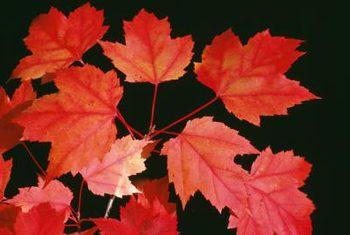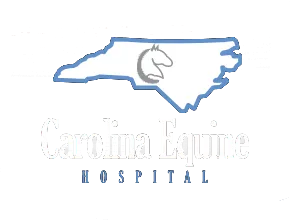The Dangers of Ingesting Red Maple Leaves
- posted: Sep. 22, 2021
 A rare but serious problem that can affect our horses is red maple poisoning, seen most often in the late summer or early fall, although it can occur during the spring and summer following storms.
A rare but serious problem that can affect our horses is red maple poisoning, seen most often in the late summer or early fall, although it can occur during the spring and summer following storms.
Red maple trees naturally occur across the midwest and eastern portion of the United States, but due to their beautiful red color in the fall, they have been planted across the country. The problem occurs when horses eat wilted or dried leaves from the red maple tree, which damages the horse's red blood cells, resulting in acute anemia. The leaves of red maple trees are three-five-lobed and green, with bright red stems and silver-white undersides.
Fresh red maple leaves are not the problem. It is the wilted green leaves from windfall, pruned limbs or after a heavy frost that can produce poisoning. Most of the cases seen have been following a major storm where red maple trees or limbs were blown down. Horses at greatest risk for poisoning are horses not receiving enough roughage, horses kept in dry lots with limited hay, or young horses. The toxin in red maple leaves has never been identified, but after eating red maple leaves, horses develop severe anemia that results in weakness, depression, pale to yellow mucous membranes and dark brown to red urine due to the hemoglobin being released when the horse's red blood cells are destroyed.
Affected horses can also exhibit an increased respiratory or heart rate but usually have a normal body temperature.Onset of clinical signs can occur as early as 18 hours or up to five days following ingestion of as little as 1.5 to 3 pounds of wilted leaves. If you horse exhibits these clinical symptoms and has had exposure to red maple leaves, call your veterinarian immediately, as the condition left untreated can result in death. Call your veterinarian immediately, and while waiting for arrival, keep the horse quiet and do not move the horse anymore than necessary as he might have a limited amount of oxygen in his blood due to the damaged red blood cells.
If possible, without stressing the horse, catch some of the horse's urine so the veterinarian can examine it. Allow the horse to eat hay and drink all the fresh water he wants. Treatment is focused on preventing absorption of the toxin, so your veterinarian will administer activated charcoal and/or mineral via a stomach tube. IV fluids will be administered to flush and prevent kidney damage, and in severe cases, a blood transfusion will be administered. Vitamin C, non-steroidal anti-inflammatory drugs and corticosteroids may also be indicated.
Of course, the key to protecting your horse against red maple poisoning is the prevention of exposure, which starts with preventing your horse's access to wilted red maple leaves. Your local Extension agent can help you with identifying these trees. It is not necessary to cut down existing red maple trees in pastures, but low branches should be trimmed back out of reach of horses, and small trees should be fenced off. Be especially diligent in removing fallen branches and leaves following a storm, and do not throw leaves gathered during yard work into the pasture. Trees in dry lots where horses are on limited forage should be cut down, as the horses will have a greater tendency to eat the leaves than pastured horses.
It is a good idea in the fall to remove horses from pastures where large numbers of leaves might accumulate. If that is not possible, make sure the horses have access to plenty of good quality hay and monitor horses daily. and finally, avoid red maples when choosing new trees to plant in or around pastures and turnout areas. If you have any questions about red maple poisoning, talk to your local veterinarian.
Location
Find us on the map
Browns Summit Location
5373 NC Hwy 150
Browns Summit, NC 27214, United States

